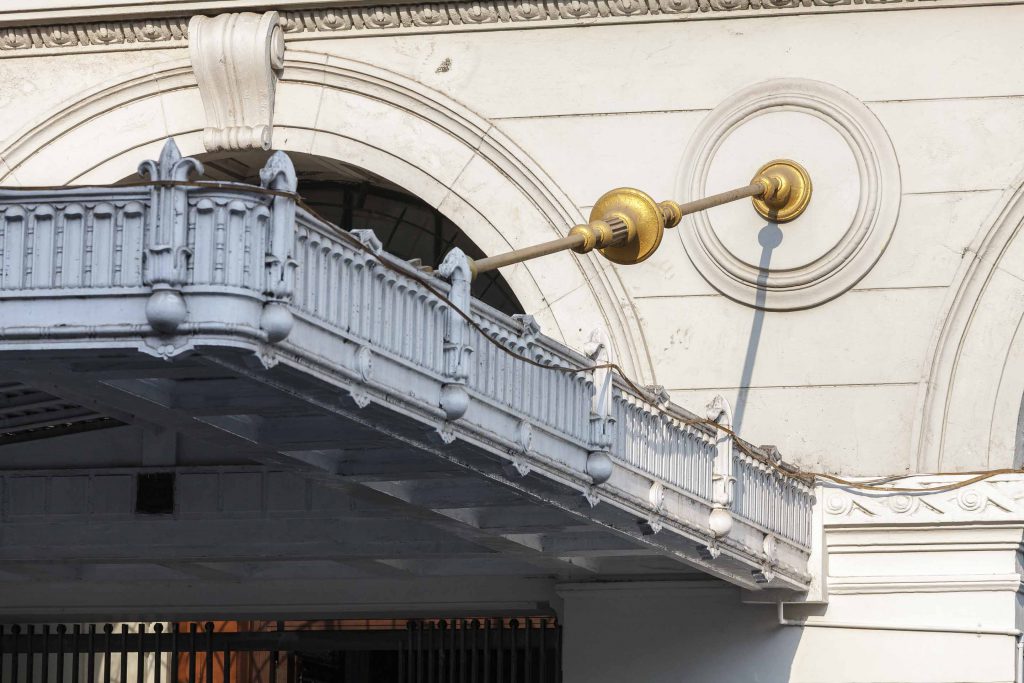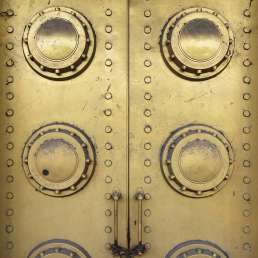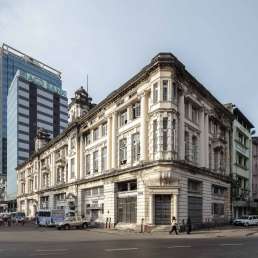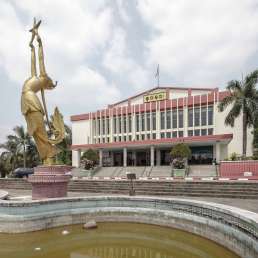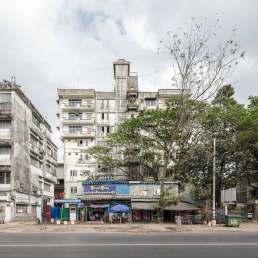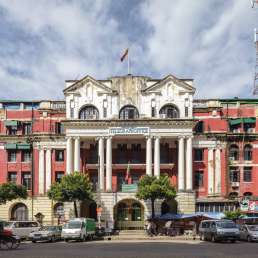Formerly: Irrawaddy Flotilla Company
Address: 50 Pansodan Street
Year built: 1933
Architect: AG Bray (architect), Arthur Flavell & Co. (contractors)
This building stands out from its neighbours due to its recessed façade and twin Doric colonnade. Above the columns are golden clam shells, reflecting the building’s maritime connection. All doors and windows on the ground floor are set back too, to protect it from the sun. Like many buildings on the east side of lower Pansodan Street, an enormous entrance canopy stretches across the sidewalk and some of the street. It is suspended by gold-painted rods. Iron elements on windows and balconies are painted petrol green. Long-time Yangon resident Harry Hpone Thant told us:
“The pavement in front of the building used to be covered with big black slate tiles. They were slippery when wet, and caused trouble for female office workers when the rain and driving winds made them hold onto their flapping htameins (dresses), the umbrella, their sling bags and their lunch basket all at the same time.”
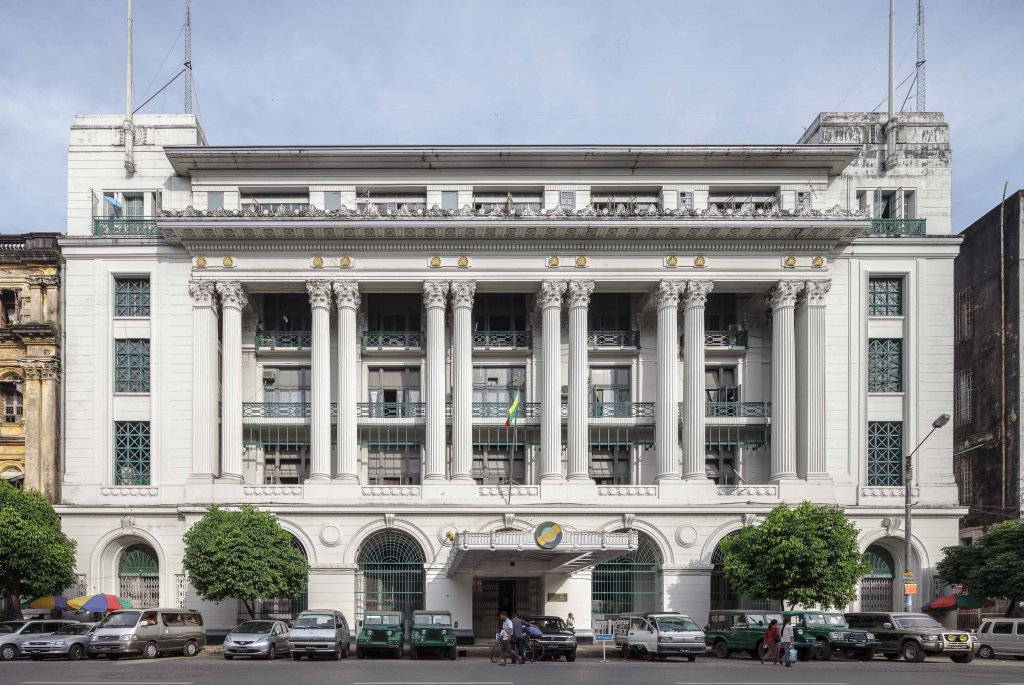
The Inland Water Transport Board building was built for the corporate headquarters of the Irrawaddy Flotilla Company (IFC). The firm’s founders, the Henderson brothers from Fife in Scotland, were experienced shippers. They grew their business servicing the “emigrant trade” between Britain and Canada, the United States and New Zealand. On the return journeys from New Zealand, Henderson ships would call at Rangoon, taking on shipments of rice and teak. Before long, they realised the potential of Burma’s growing economy and purchased several steamers to profit from the river trade in the 1860s. On the eve of the Second World War, the IFC commanded a fleet of several hundred vessels travelling the country’s waterways north to south and vice versa, transporting cargo and passengers. Almost the entire fleet was deliberately destroyed ahead of the Japanese invasion in 1942 to prevent the ships from falling into enemy hands.
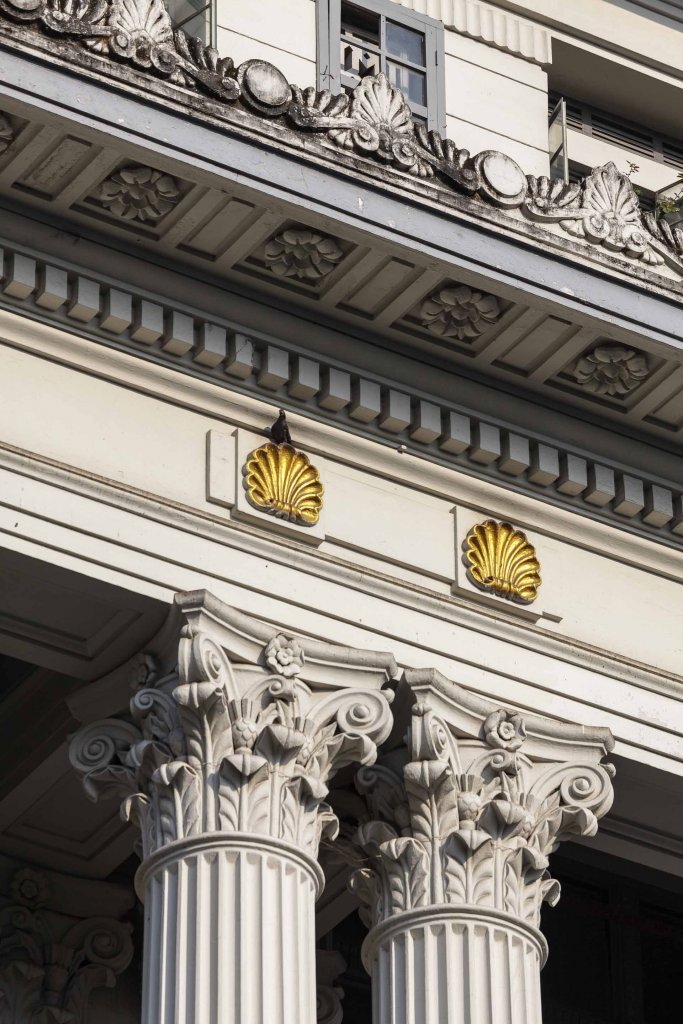
The Ayeyarwady (today’s name for the former Irrawaddy River) flows from the country’s north to south. It is navigable all year. Other rivers include the Chindwin (a tributary of the Ayeyarwady) and the Thanlwin. The country also possesses a dense network of canals which, depending on the season, are also navigable. The British connected Rangoon more directly to the Ayeyarwady in the late 19th century by digging the 35-kilometre-long Twante Canal. This infrastructure facilitated the exploitation of Burma’s natural resources and fuelled the colonial project. By 1910 practically all teak and three quarters of rice were shipped by boat. The IFC and the Bombay–Burmah Trading Corporation (both Scottish companies) were instrumental to Britain’s northward push. This led to the annexation of Upper Burma in 1885, when the BBTC provided a casus belli with King Thibaw over a tax dispute. The IFC readily put its many ships at the disposal of the 20,000 British Indian troops. These took Mandalay with little resistance. Today, almost half of the nation’s transported goods still travel on the back of river steamers, some of them several decades old.
